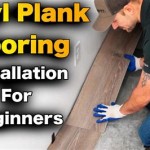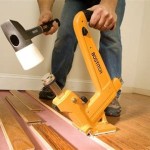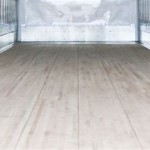Is Wide Plank Flooring More Expensive?
The question of whether wide plank flooring is more expensive than narrower plank flooring is a common one for homeowners and builders alike. The perception often leans towards an affirmative answer, and while there's a degree of truth to it, the reality is more nuanced than a simple yes or no. Understanding the various factors that influence flooring costs is crucial to making informed decisions for any project.
Several elements contribute to the overall expense of installing wide plank flooring. These factors range from the raw materials used to the manufacturing process, installation complexities, and ultimately, the perceived aesthetic value. Examining each of these elements can provide a clearer picture of the cost differential between wide plank and narrower plank flooring options.
Material Costs and Sourcing
One of the primary drivers of cost in flooring, regardless of plank width, is the type of material used. Solid hardwood, engineered hardwood, and even wood-look alternatives like laminate or vinyl all have different price points. However, when considering wide plank flooring, the material cost often increases, particularly for solid hardwood. This is primarily due to the availability and yield of usable lumber. Larger, older trees are generally required to produce wide planks, and these trees are becoming increasingly scarce. Their scarcity directly translates into higher raw material costs.
The sourcing of the wood also plays a significant role. Sustainably harvested lumber, especially from exotic or rare species, will command a premium price. Even domestically sourced wood can vary in price depending on its grade and the region it comes from. For example, wide plank floors made from reclaimed wood can be quite expensive due to the labor-intensive process of salvaging, cleaning, and preparing the material for flooring use. Conversely, engineered wide plank flooring might utilize a less expensive wood veneer on top of a more affordable core material, potentially reducing the overall cost compared to solid hardwood.
Furthermore, the grade of the wood impacts the price. Flooring is typically graded based on its appearance, including the number of knots, variations in color, and the presence of imperfections. Higher grades with fewer imperfections are more aesthetically uniform and typically more expensive. This disparity in grading costs is often amplified with wider planks, as any imperfections are more noticeable across the larger surface area, leading to a stricter selection process and a higher percentage of waste during manufacturing.
Manufacturing Processes and Waste
The manufacturing processes involved in creating wide plank flooring are often more complex than those used for narrower planks, especially when dealing with solid hardwood. Sawing wider planks from logs requires specialized equipment and skilled operators. The risk of warping, cupping, or bowing increases with wider dimensions, necessitating careful drying and milling techniques. This often leads to slower production times and higher labor costs, which ultimately contribute to the higher price of wide plank flooring.
Waste is another significant factor. When manufacturing any type of flooring, a certain amount of raw material is inevitably lost due to defects, cutting errors, and other imperfections. However, the waste percentage tends to be higher with wide plank flooring. This is because flaws in the wood, which might be permissible or easily trimmed away in a narrower plank, can render a wider plank unusable. The larger surface area of the wide plank simply exposes more opportunities for defects to be present.
The drying process for wide planks is also more challenging. To prevent warping and ensure stability, the wood must be dried slowly and carefully over an extended period. This requires specialized kilns and meticulous monitoring of moisture content. The longer drying time ties up resources and increases the cost of production. Engineered wide plank flooring mitigates some of these issues as the core material offers more stability and reduces the risk of warping compared to solid hardwood.
Installation Challenges and Labor Costs
The installation of wide plank flooring can present challenges not typically encountered with narrower planks. Wider planks tend to expand and contract more with changes in humidity, making proper acclimation and installation techniques crucial. Incorrect installation can lead to gapping, cupping, or even buckling of the floor, resulting in costly repairs or replacement.
Consequently, the labor costs associated with installing wide plank flooring are often higher. Installers need to have experience working with these materials and understand the specific requirements for proper installation. They may need to use specialized tools, such as moisture meters and heavy-duty fasteners, and employ techniques like gluing and screwing in addition to nailing to ensure the planks remain stable. The extra time and skill required translates to higher labor charges.
Furthermore, the subfloor must be perfectly level and prepared adequately before installing wide plank flooring. Any imperfections in the subfloor will be more noticeable with wider planks. In some cases, additional subfloor preparation may be necessary, adding to the overall cost of the project. Self-leveling compounds or additional layers of underlayment might be required to create a smooth, stable surface for the wide planks.
The layout of the room and the complexity of the installation pattern also impact labor costs. Rooms with irregular shapes or numerous doorways and obstacles will require more cutting and fitting, increasing the installation time. Intricate patterns, such as herringbone or chevron, will further increase labor costs due to the precision and skill required to execute them correctly.
Acclimation is critical for any wood flooring, but it is particularly crucial for wide plank flooring. Allowing the planks to adjust to the room's temperature and humidity for an extended period before installation helps minimize movement after installation. This prolonged acclimation period can also affect the project timeline and potentially increase costs if it delays other phases of construction.
While often more expensive, the visual impact of wide plank flooring can dramatically transform a space. The fewer seams create a sense of spaciousness and luxury. The perceived value added by wide plank flooring can, for some, offset the higher initial investment. The large expanse of wood surface allows for a greater appreciation of the natural grain and character of the wood, adding warmth and sophistication to the room.
In summary, the increased cost of wide plank flooring compared to narrower planks stems from a combination of factors related to material sourcing, manufacturing processes, and installation challenges. While alternative materials like engineered wood and careful sourcing can mitigate some of these costs, homeowners should be prepared for a potentially higher price point when opting for wide plank flooring.

Hardwood Vs Luxury Vinyl Plank Flooring The Creative Kitchen Co

Wide Plank Vs Narrow Auten Wideplank Flooring

Average Hardwood Flooring S In 2024 Forbes Home

Wide Plank Flooring Pros Cons Three Trees

Oak Vs Maple Floors Find Out Which Is Better Carlisle Wide Plank

Tile Vs Wood Flooring Major Differences Pros Cons And Costs Forbes Home

6 Best Vinyl Plank Flooring Options Tested By Home Experts

The Differences In Herringbone Vs Chevron Patterns Carlisle Wide Plank Floors

10 Select Better 5 To Foot Long Unfinished Solid White Oak Flooring

What Is Wide Plank Wood Flooring Engineered News
Related Posts








